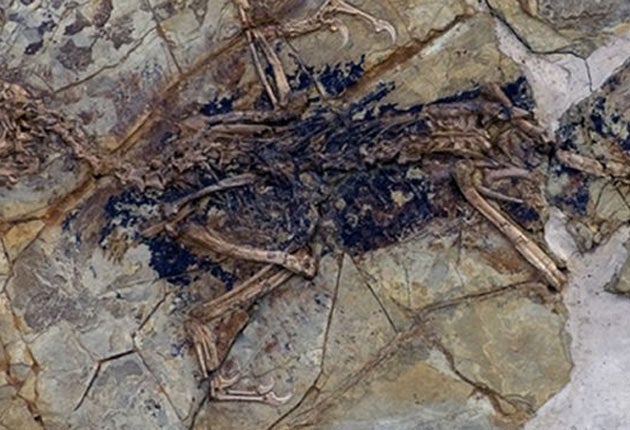Chinese fossil knocks oldest bird off perch

After 150 years of being classified as the oldest bird, scientists have knocked the fossil Archaeopteryx off its perch and reclassified it as a feathered dinosaur, one of many that were fluttering around in the Jurassic period more than 150 million years ago.
Archaeopteryx is an iconic fossil, and one of the best-preserved specimens is considered to be one of the most precious objects in the Natural History Museum in London. The fossil is a classic textbook example of a species in evolutionary transition, displaying features that are part bird, part reptile.
Archaeopteryx, however, has provoked controversy since the first fossil specimen was discovered in a Bavarian quarry in 1861, just two years after the publication of Charles Darwin's On the Origin of Species. (Darwin included a reference to it in later editions.)
Scientists were adamant that Archaeopteryx (meaning "ancient wing") was the earliest example of the group of animals that split away from the reptiles to form a distinct class of creatures with feathers and wings – the birds.
However, a newly discovered fossil of a two-legged feathered creature in China has led researchers to re-evaluate the zoological position of Archaeopteryx and place it firmly within a recently discovered group of dinosaurs with feathers and primitive wings.
The reclassification of Archaeopteryx is expected to be exploited by creationists, who are likely to pick up on the fact that scientists are appearing to change their mind about the fossil's iconic status as the first bird, but this would be wrong, said Lawrence Witmer, professor of anatomy at Ohio University.
The reclassification does not alter the fact that Archaeopteryx possessed features that are both reptilian and avian, nor does it change the fact that birds evolved from feathered dinosaurs, he said. "What this does is change our view of Archaeopteryx. For 150 years it's been our oldest and most prominent bird. Part of the reason why we should care about this is that Archaeopteryx is probably one of the most famous fossils ever," Professor Witmer said. "It changes a lot in terms of how we view early birds, and how early birds evolved."
The new fossil, Xiaotingia, was bought from a Chinese fossil dealer and is believed to be about 155 million years old.
The Chinese team of scientists believe that Xiaotingia's rows of small teeth put it firmly within the theropod group of meat-eating dinosaurs.
Professor Witmer said: "Perhaps the time has come to finally accept that Archaeopteryx was just another small, feathered, bird-like theropod."
Join our commenting forum
Join thought-provoking conversations, follow other Independent readers and see their replies
Comments
Bookmark popover
Removed from bookmarks